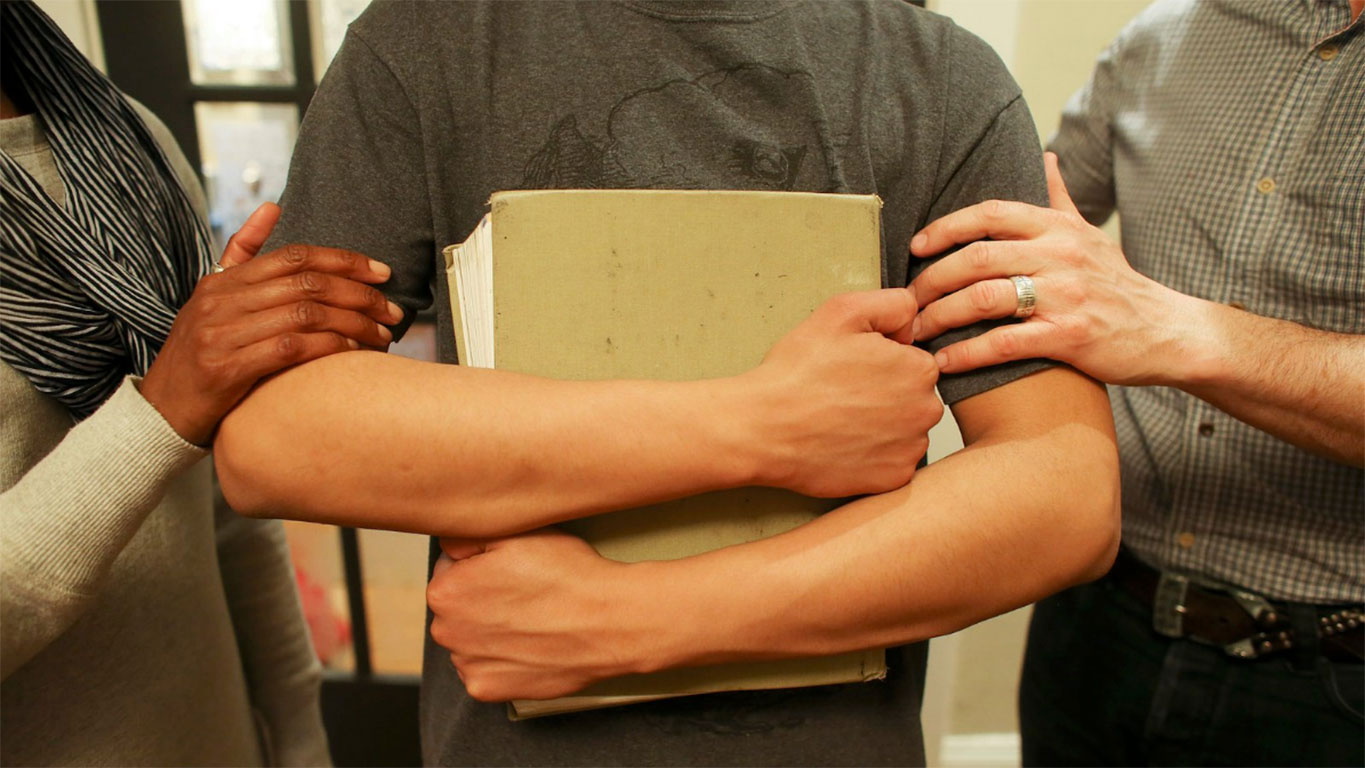The day after the 2016 election, Baylor University sophomore Natasha Nkhama was walking to her 10 a.m. class in Waco, Texas, when another student shoved her. “No n-----s allowed on the sidewalk,” the stranger allegedly said, contributing to a recent uptick in violent acts of bigotry.
A November report from the FBI found that in 2015, hate crimes against Muslims in America had reached 9/11-era levels, increasing by 67 percent. Hate crimes overall went up 7 percent. Meanwhile, in 2016, the Southern Poverty Law Center reported more than 1,000 hate-related incidents in the month after the election alone.
Nkhama was ready to chalk up the incident to Trump-related intolerance when a bystander-another student-intervened, saying to the aggressor, "Dude, what are you doing? That's not cool." Two days later, more than 300 people from within the Baylor community lined up to walk Nkhama to class.
Their message was clear: Racism isn't tolerated here. It's a message that's becoming formalized at institutions-from governments and workplaces to college campus-across the country.
"What we're trying to do is create a norm where people help," says Leslie Fasone, assistant dean for women and gender affairs at Indiana University Bloomington. Fasone oversees one of a growing number of bystander intervention programs present on college campuses. The program began roughly six years ago when the campus was dealing with a number of serious student injuries and, even, deaths. At the time, Fasone says a common theme "was that somebody could have potentially intervened," but chose instead to mind his or her own business.
Standing by in moments of conflict isn't unusual. In fact, it's classic behavior associated with the "bystander effect"-a phenomenon studied by psychologists as early as the 1960s- in which witnesses don't help, either because they assume someone else will take care of it or because they're afraid that intervening is dangerous. The most famous instance of the bystander effect was during the 1964 murder of Kitty Genovese, supposedly seen by 37 neighbors who did nothing to intervene. (It has since been revealed to be a myth.) Yet the effect has been proven to be very real.
But experts are finding ways to overcome the fearful motivations of potential bystanders. Programs like Green Dot and Step UP! help future witnesses internalize personal responsibility on their decisions to help or not to help by offering tools and best practices for intervening safely. Overcoming harassment doesn't have to be hard, says Fasone. "Bystanders don't always have to be direct and address the person that's being discriminatory or harassing somebody.
For example, Fasone describes one effective method captured in the now-ubiquitous intervention guide created by Maeril, a French illustrator of Middle Eastern descent, for defusing Islamophobic harassment by employing a technique known as "noncomplimentary behavior." Essentially, witnesses ignore the harasser, instead focusing on personally connecting with the victim to mollify a potentially violent situation. Charles Sonder (aka Snackman) took this approach in 2012, earning social media fame after breaking up a fight in the New York City subway by standing between the two combatants and quietly eating a stack of cheddar-flavored potato chips.
Quantifying and tracking bystander intervention may not be as clear-cut as it is for hate crimes. Yet, a number of reports in recent months have been heartening. In June, after a man boarded the New York City subway and started screaming insults at two Muslim women wearing hijabs, a group of subway riders shut him down. When a girl was sexually assaulted on a bus this past October, actor/activist Moise Morancy put a stop to it by forcefully telling the assailant to stop.
Recent studies in the Journal of Interpersonal Violence and the European Journal of Social Psychology show that when bystanders choose not to let "uncivil behavior" go unchecked-instead breaking the pattern and taking action-the more likely witnesses are to intervene in the future. In other words, the more we help, the more we create an expectation that helping is acceptable.
It's a guideline for behavior that was perhaps best summed up by Fred Rogers of Mister Rogers' Neighborhood fame: "When I was a boy and I would see scary things in the news, my mother would say to me, 'Look for the helpers. You will always find people who are helping.'"
Source: good.is


